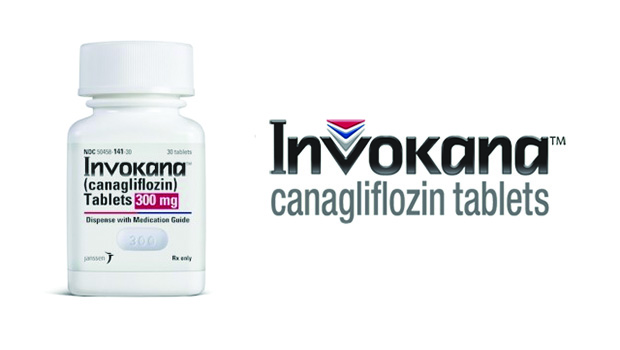U-500 Insulin: Everything You Need to Know
This special-purpose insulin is important for people with extreme insulin resistance but consideration of other medications, diet and exercise is advised

What is it and Why You may not have Heard About it
U-500 insulin is a highly concentrated form of U-100 insulin. U-500 humulin-R insulin is five times stronger than U-100 insulin. U-100 insulin is the standard insulin most patients with type 1 or type 2 diabetes would be prescribed.
Don’t be surprised if you’ve never heard of U-500 insulin. It isn’t commonly included in the typical list of insulin options for a few reasons.
The first reason you’ve never heard of U-500 insulin is that U-500 insulin is “humulin R” insulin. The “R” stands for “regular” which means it’s “short-acting” insulin rather than the newer insulins most of us use today that are “fast” or “rapid” acting.
“Regular” insulin is one of the first insulins manufactured to help people with diabetes cover their insulin needs during and after eating. It takes at least 30 minutes to begin working, which means post-meal blood sugars can easily spike before your insulin starts working. This makes it simply less ideal for most patients when there are newer options on the market today like Novolog, Humalog, Apidra, and Fiasp.
The second reason you’ve never heard of U-500 insulin is that it’s intended only for people with extreme insulin resistance, explains research from the American Diabetes Association.
The patients who qualify in the category of “extreme insulin resistance” can include:
- Needing more than 200 units of U-100 insulin per day and struggle to lower their A1c
- Obese patients with type 2 diabetes
- Pregnancy with diabetes
- During treatment for an infection
- During steroid use for another condition
More specifically, a patient would qualify for U-500 insulin when they are using more than 200 units of insulin per day and struggling to lower their A1c.
By making the insulin five times stronger than U-100 insulin, dosing your insulin is easier and delivered in fewer physical units. If you normally need 50 units of U-100 insulin with a small meal, you would only need 10 units of U-500 insulin.
The ADA’s research has found that delivering a more concentrated dose of insulin — which means it’s a smaller volume of actual liquid — is more effective in reducing blood sugars than a larger volume of the same dose.
Side-effects of U-500 Insulin
“Potential adverse effects of insulin therapy include risk of hypoglycemia and weight gain,” explains the ADA. “At the present time, there is no way to completely avoid either hypoglycemia or weight gain with insulin therapy.”
Combatting insulin resistance with more insulin inevitably leads to weight gain, as excess insulin can store energy as body fat.
Low blood sugars are also at an increased risk because just taking 3 units, for example, more than you actually need for the meal you just ate means you’re actually getting 15 additional units of insulin that will continue to drop your blood sugar.
American Diabetes Association (ADA) lists the following as symptoms of low blood sugar:
- Feeling shaky
- Being nervous or anxious
- Sweating, chills, and clamminess
- Irritability or impatience
- Confusion
- Fast heartbeat
- Feeling lightheaded or dizzy
- Hunger
- Nausea
- Color draining from the skin (pallor)
- Feeling Sleepy
- Feeling weak or having no energy
- Blurred/impaired vision
- Tingling or numbness in the lips, tongue, or cheeks
- Headaches
- Coordination problems, clumsiness
- Nightmares or crying out during sleep
- Seizures
If you do feel low blood sugar symptoms while taking U-500 insulin, absolutely report this to your doctor. Just because your A1c is still high does not mean you aren’t experiencing hypoglycemia.
This means that deciding to go on U-500 insulin should be made after considering other options to improve insulin resistance and blood sugar levels.
Before considering U-500 insulin…
It’s important to remember before turning to this concentrated insulin that there are other potential avenues to increase your sensitivity to insulin and lower your blood sugar levels.
“Before discussing higher doses of insulin,” explains ADA research, “it is important to reiterate that diet and exercise, as well as oral agents that increase insulin sensitivity, may have value as adjunctive forms of treatment to insulin.”
Diet & Exercise
Diet and exercise — with the goal of weight-loss — will help improve insulin sensitivity dramatically, but if a patient’s overall insulin production is severely impaired due to gradual beta-cell dysfunction, this path has limits.
According to a 2016 study published in Diabetes Care, approximately 60 percent of patients with type 2 diabetes cannot reverse diabetes because their pancreas doesn’t produce adequate amounts of healthy beta-cells, which means they don’t produce enough insulin.
For patients struggling with beta-cell dysfunction, insulin injections are inevitable, but it should still be accompanied by improvements in diet, exercise, and overall health habits.
Oral diabetes medications
Oral diabetes medications generally improve blood sugar levels by way of:
- Decreasing the amount of glucose your liver makes
- Increasing your body’s sensitivity to your own insulin
- Helping your body produce more insulin
- Excreting excess glucose through your urine
“Oral insulin sensitizer agents may be of value when combined with insulin therapy,” explains ADA. “In fact, in most circumstances, oral agents are used first and insulin therapy added incrementally in an attempt to reach therapeutic targets.”
Non-insulin injectable medications
Another category to be considered before switching to U-500 insulin are the non-insulin injectable medications.
Non-insulin injectable medications generally improve blood sugar levels by way of:
- Helping you produce more insulin naturally
- Slowing down how quickly you digest your meals
- Reducing the amount of sugar your liver makes
- Decreasing your appetite so you eat less food
The first step is talking to your doctor about treating your diabetes and your health goals with a new treatment plan if your current plan isn’t improving your health.





